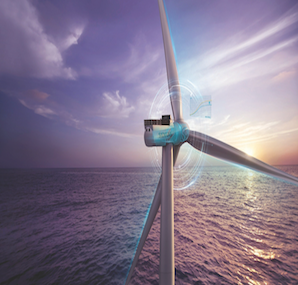Reaction units have several chronic problems that may be eliminated or reduced by appropriate application of materials and designs. Attention to these problems in the design and repair stages can dramatically reduce their effects and contribute to longer trouble-free operations. For Francis units, integral rotating seals or wear rings eliminate the problem of broken or loosened rings. That design solution is enhanced by use of a base material that is corrosion, galling and cavitation resistant.
In establishing a cavitation performance guarantee for new runners, it is wise to identify material loss from any source within this guarantee. This forces the civil design to address suitable rock traps or other hard particle separation, as well as identifying the metallurgy that will withstand the aqueous conditions and material combinations.
Construction
Construction of runners may be by casting, wrought materials welded together, or a combination of these basic two types. When later welding is required, austenitic material requires no further heat treatment, while martensitic material requires full heat treatment for any major repairs, which could include severe cavitation damage or cracking. Corrosion often interacts with cavitation to produce accelerated heat loss. In most hydro applications, austenitics have greater corrosion resistance than martensitics.
One of the requirements of a large turbine runner is to be able to make repairs in place. With martensitic base materials, crack repair and deep cavitation (15% or more of section thickness) require in-kind weld material repairs and a subsequent full heat treatment. This heat treatment would require dismantling and shipment to a suitable facility.
According to most suppliers of martensitic materials, repairs may be easily done using a 308 filler material. This is true if the damage is minimal, or is not in crack-prone locations. If the damage is in the upper or lower fillets and subsequent heat treating due to other major repairs is required, the austenitic material in these crack-prone locations will be sensitised and may crack in a short time.
Minimise damage
Welding repairs should incorporate contour and entrance angle modifications to minimise the potential for future damage, rather than relying on exotic material changes which can accelerate electrolytic material loss. Crack repairs of significant depth or cavitation repairs in martensitics should not involve austenitics at all if there is an alternative. If no post-welding heat treatment is possible for martensitic repair or martensitic runners, then the highest strength austenitic should be chosen.
Tests by the US Army Corps of Engineers are documented in a comparison document for material used in waterways. In this document, austenitic materials rate considerably higher in most environments for corrosion and electrolytic problem avoidance. Of the austenitic stainless steels, Nitronic 60 stands out for galling, corrosion and cavitation resistance and for strength.
Nitronic 60 is ASTM CF-10SMnN in cast form, UNS S21800 in wrought form and AWS ER 218 as welding wire. The material is ideal for seal or wear rings, or threaded fasteners that engage any type of stainless steel where galling or loosening is a problem.
Nitronic 60 appears to be the optimum overlay material for Kaplan or propeller blade tips regardless of the base material. It equals or exceeds the cavitation resistance of any other commonly used materials, and this characteristic also favours it for cavitation repair of Francis blades, bands and crown. Nevertheless, the key to reducing cavitation damage still lies in the appropriate entrance and discharge angles and blade contours.
When correcting initial contour flaws, Nitronic 60 can be easily applied without compromising the strength, corrosion or cavitation resistance of the base material or weld application. For carbon steel or austenitic runners, Nitronic 60 should be the first choice for cavitation repair or initial overlay in critical areas. For martensitic runners Nitronic 60 has comparable tensile strength and twice the yield strength of other austenitic materials.






